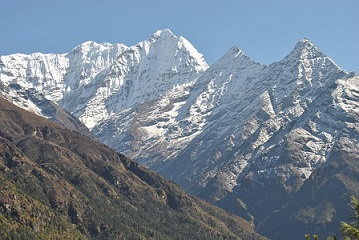 In the middle of the pathway to Mount Everest, Nepal lies the small, isolated 900-person community of Khumjung, at nearly 17,000 feet. There are no water lines or modern sanitation in this area, and the groundwater is that serves the community is contaminated.
In the middle of the pathway to Mount Everest, Nepal lies the small, isolated 900-person community of Khumjung, at nearly 17,000 feet. There are no water lines or modern sanitation in this area, and the groundwater is that serves the community is contaminated.
This small community lies near the base camp for trips up Everest and sees between 20 000 and 32 000 visitors traipse through the area every year; a number that is ever-increasing.
Unfortunately the people that visit this wonder of nature to view the most stunning vista in the world are not that neat and tidy, and the route has been a dumping ground for tourists since the 1950s. The human waste, trash and discarded equipment are hidden from human eyes, but are contaminating everything around, including the snow that the community use for water.
Everest’s Water Contamination Problem
Kirsten Nicholson, a Ball State geological sciences professor, together with faculty and students started the Himalayan Sustainability Initiative to study the contamination over the past several years.
In 2013 and 2014, Nicholson, Klaus Neumann and Carolyn Dowling, fellow geological science professors, did the trek with immersive learning classes, battling harsh weather and illness from giardiasis and other water-borne diseases.
To date various trash pick-up drives and facilities such as rubbish bins and facilities to hold waste that were built by the Nepalese government have yielded little change, and the poor communities in the area just move further up the mountain to find water.
In May this year, Kirsten and another team returned to Mount Everest to expand their research into the effects of human waste left by climbers on Everest is having on the local community’s water resources.
The team is working in conjunction with Subodh Sharma, a professor of environmental science at Kathmandu University; Nurbu Sherpa, a community leader in Namche Bazaar village; Pemu Sherpa, a community leader in Khumjung; and a youth group from Namche. Groundwater samples were collected and E. coli concentrations analysed, and bacteria, pH, temperature, total dissolved solids and conductivity will all be tested.
Once all the tests are in, the team at Ball State will seek funding to take in drilling equipment that would allow for the drilling of wells near the town of Kunde that could yield potable drinking water.
Water dispensers in London and office water coolers from Living-Water. Get home water dispensers at an affordable price.





